By Robert Golomb
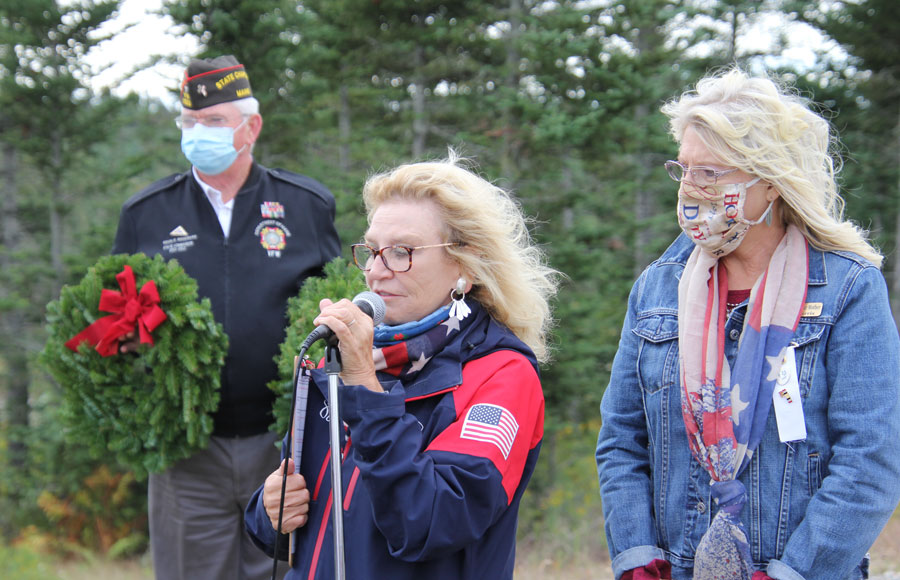
“It is our mission along with more than 2,000 similar oriented charities, civic and religious groups throughout America to remember our fallen U.S. military heroes, honor veterans and those who currently serve in our armed forces and teach our children about the sacrifice these great heroes have made to defend and protect our great nation’’, stated Karen Worcester, the executive director of Wreaths Across America, as we began, from my New York office to hers in Maine, our telephone interview last week.
While similarly described in the organization’s mission statement, which I had previously reviewed, Worcester’s compelling description of the work and goals of Wreaths Across America (WAA) reminded me of why, after receiving an email sent from its Maine headquarters 2 weeks before, I had become so impressed by this organization.
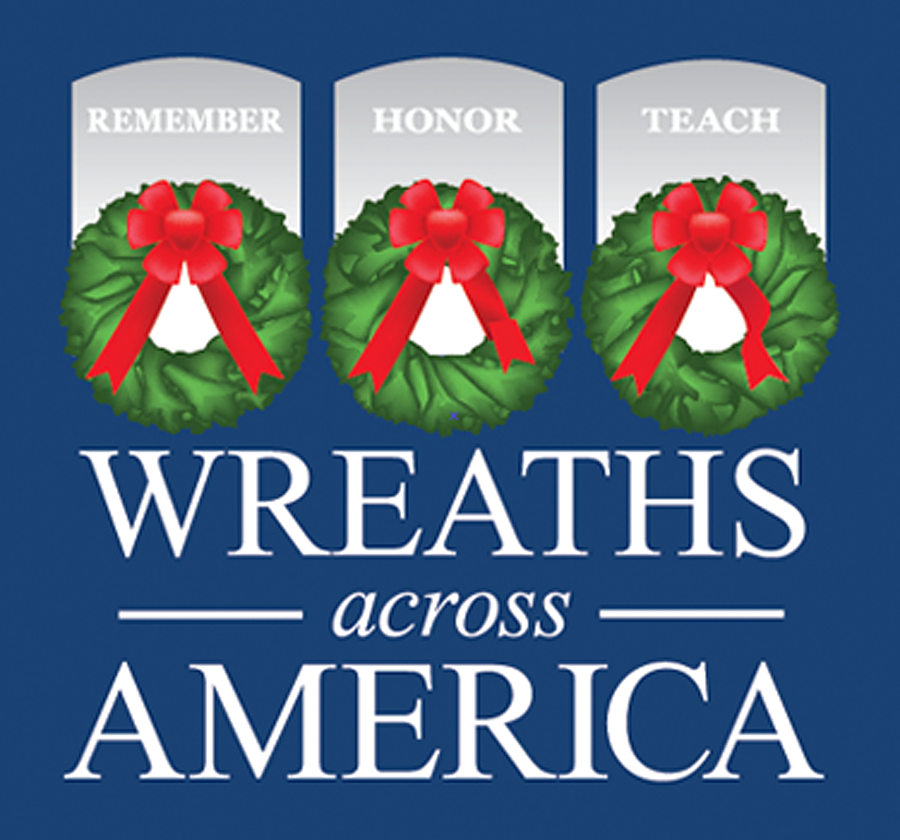
As I learned from that missive, WAA was founded in 1992 by Karen’s husband, Morrill Worcester, and became a non- profit entity in 2007. And, as I also learned, since its inception, now almost 30 years later, this cadre of patriots has teamed with several thousand like-minded nonprofits, religious institutions, municipalities, civic groups, veterans’ organizations, small businesses and corporations throughout our nation to sponsor thousands of events, projects and ceremonies that further its noble mission.
As Karen Worcester explained, “Our mission to remember, honor and teach is carried out in coordination with our wonderful partners throughout America.”
“And as our major yearly project,” she continued, “working as a team with our partners throughout America, we conduct on a selected day every December, a memorial to our deceased veterans we call ‘Wreaths Across America Day.’ On that day, we hold wreath laying ceremonies at Arlington National Cemetery. In addition, we simultaneously hold wreath laying ceremonies at the more than 2,500 veterans’ cemeteries across America.”
Worcester, however, emphasized that while Wreaths Across America Day has gathered the most media and public attention over the years, her organization sponsors and coordinates many other proceedings honoring our military heroes throughout the year- both on holidays and on non-holidays.
“As you would expect, on Veterans Day in the fall and on Memorial Day in the spring, we are engaged in a variety of projects and events that serve to remind the public that in many homes throughout our great land, there is an empty seat left at the family dinner table for a loved one who is serving, or for one who has made the ultimate sacrifice for our nation”, stated Worcester.
Worcester added that the same sentiment drives the many non-holiday tributes to our military that WAA spearheads throughout the year. “Every single day of the year, including holidays and non-holidays alike, our service men and women devote their time and sacrifice their safety to protect the lives and freedom of their fellow Americans. So it comes naturally to us at Wreaths Across America to devote every day of the week and every day of the year to work together with our many great partners on a broad range of activities that honor that sacrifice”, she stated.
In addition to wreath laying, included in those activities to which Worcester referred, she noted, are live and virtual races, walkathons, barbecues, parades, educational programs, trips, lighting ceremonies and art exhibits.
“We plan many different types of events to reflect the different interests of a wide variety of communities throughout America. However, they all have the same goal: to share with its participants the mission to remember, honor and teach about the sacrifice the members of our armed forces have made for our nation from the Revolutionary War to our current conflicts in the middle-east”, Worcester stated.
Worcester is wrapping up its on WAA’s annual “Giving in July” celebration, also known as “Do Good Twice’’ month. During this entire seventh month of the calendar year, the organization, as the first “good” honors the many groups and individuals who have partnered with them throughout year; and, as the second “good”, uses the media attention garnered from this campaign to raise donations from the public, which are used in part, to fund the array of future WAA sponsored undertakings.
“Giving in July serves to both celebrate the tireless and dedicated members of sponsorship groups who have given so much of their love, time and energy on behalf of both our active and veteran military men and women, and also to raise funds that we use throughout the year to help fund programs, events and memorials’’, Worcester explained.
It was, in fact, 2 of WRA’s most recently sponsored memorials, which had touched me the most out of so many other inspiring ones I had studied in preparation for the interview, and I thus planned to discuss with Worcester. The stories behind these memorials, I learned, are intertwined, though they bear different names.
The first, held on February 3, 2021, was called “The Four Chaplains”; the second, held on June 10th, 2021, was appropriately titled, “Wreaths Across America Celebrates Juneteenth by Remembering Coast Guardsman Charles Walter David Jr”.
As Worcester and I agreed as we discussed the tragic and heroic details surrounding these 2 memorials, both embody the bravery, patriotism and selflessness of our military men and women. I think as you read the story below, you will also agree:
In the early morning of February 3,1943, a mid-period of World War 2 (1941-1945), the U.S.A.T. Dorchester, a peacetime coastal passenger steamship converted into a military transport ship for the war, was sailing in the German submarine U-boat infested waters of the Labrador Sea, about 100- 150 miles off the island of Greenland.
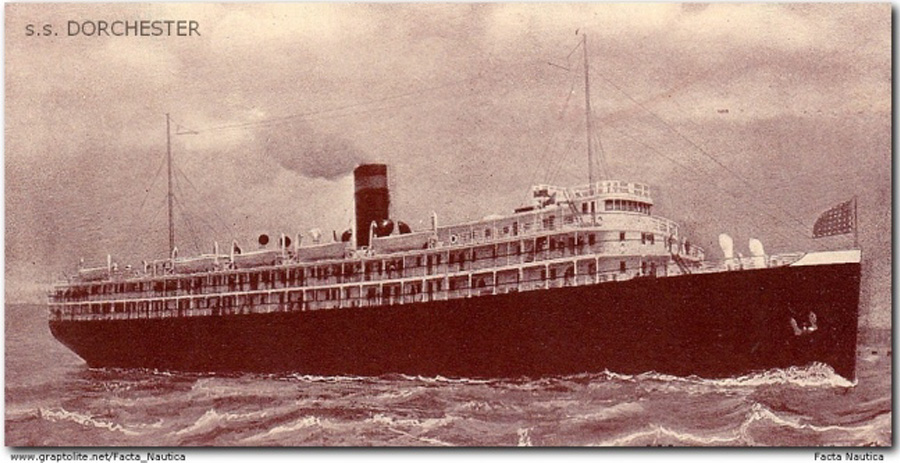
On board the ship, which along with 2 other transport vessels and 3 Coast Guard cutter escorts, had, just 10 days before, departed from New York Harbor en route to its Greenland destination, was a total of 902 men- comprised of civilian personnel, naval crew members, soldiers and officers. Of the officers, 4 were clergymen- a priest, a rabbi and 2 ministers.
Tragically, below the surface of the Labrador Sea that morning was a German U-boat, searching for American vessels to destroy. As it covertly trailed the U.S.A.T. Dorchester, the German craft fired 3 torpedoes at its target. The first 2 missed. But the third smashed through the ship’s interior. Exploding in the boiler room, the missile destroyed the ship’s mechanical equipment, from which asphyxiating pools of steam and smothering ammonia gas spread; and moments later, the Labrador’s frigid waters began to fill the fast sinking ship, which would disappear into sea within 20 minutes after the torpedo first struck.
Of the 675 American heroes who perished that morning, many were killed by the original explosion, while others died from gas poisoning, or from asphyxiation or from drowning then or later, or from suffocating while entombed within the bowels of the ship.
Still, about one third of the crew survived the initial attack. Making their way through the ship’s water drenched passageways and floors, these dazed and battered men reached the deck. There they beheld the sight of the 4 clergymen- Father John P. Washington, Rabbi Alexander D. Goode, Minister George F. Fox and the Reverend Clark V. Poling.
The 4, as survivors later reported, distributed lifeboat jackets to scores of survivors, who were to begin their life or death journey through the icy waters of the Labrador Sea, desperately trying to reach the safety of the nearby Coast Guard ships, which had started the journey with them 10 long days before. Some of those survivors floated on the only 2 available lifeboats; some floated on rafts; and others simply swam, kept afloat by their lifejackets.
Waiting on board their ships to pull the survivors from the sea were about a dozen Coast Guard men. Among them was Walter David Johnson Jr. A 26-year old African American, Johnson had jumped from his ship into the sea to save 2 men from drowning. From there, Johnson helped his fellow heroes clutch 93 more survivors from the icy waters. On March 18th, 1943, just 56 days after his courageous actions, Walter David Johnson Jr. succumbed to the pneumonia he caught while on his rescue mission.
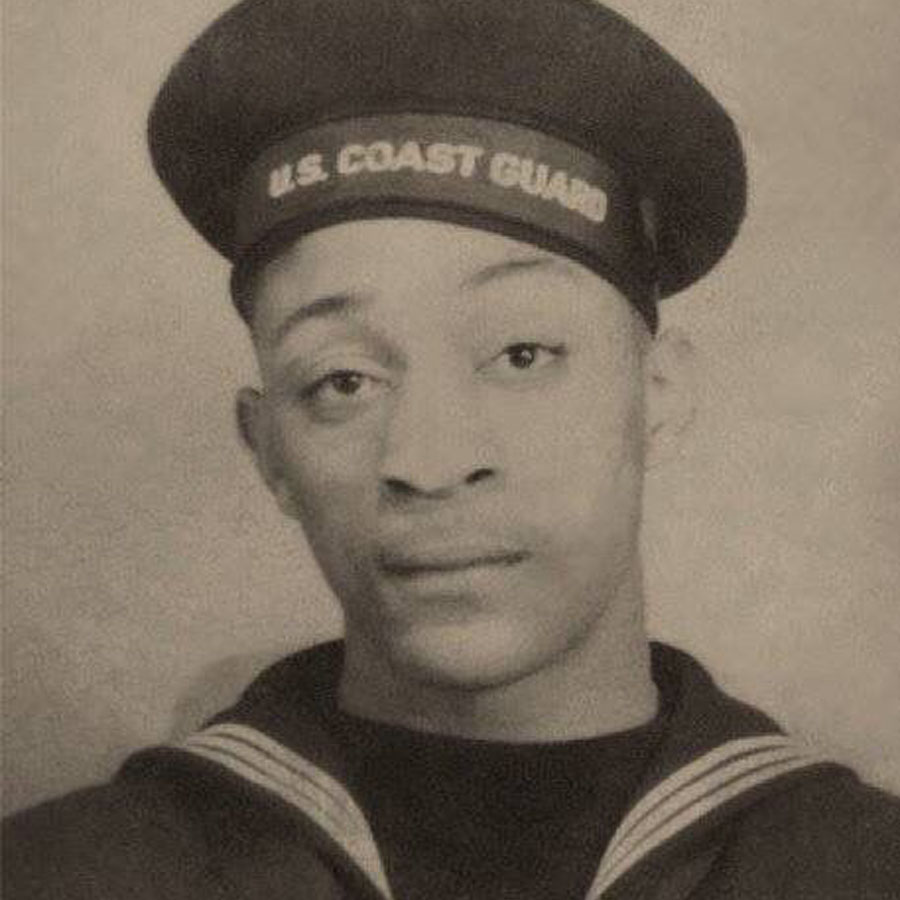
As Naval officials have conjectured, several dozen of the original survivors- a closer estimate of the number was understandably impossible to later determine- drowned as they tried to reach their would-be rescuers.
By the official (and undisputed) count, there were 260 survivors. Among them, were several of the last to escape the sinking U.S.A.T. Dorchester. These men later spoke of a shared recollection of their final sighting of the 4 clergymen- each of whom had, minutes before, given their own lifejackets to others and had volunteered to remain on the doomed ship, so that others could take their place on the limited supply of lifeboats and rafts.
The shared memory of those survivors was that of watching the 4 men of God standing arm-and-arm in prayer, as they sought to comfort the dozens of servicemen still on board the ship, who within just a few more minutes would perish into the sea with them.
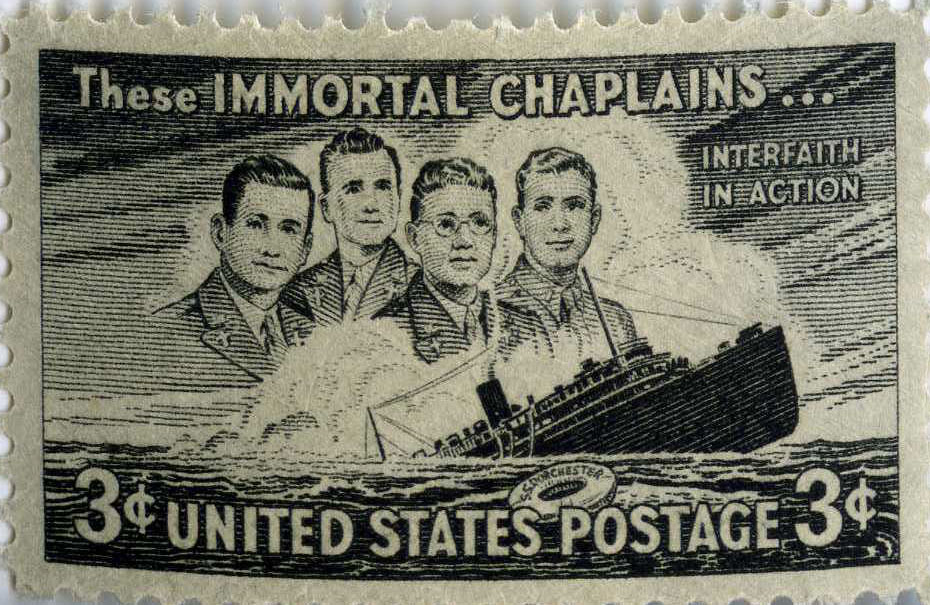
“Each prayed his final prayer in his own way and each died so that others could live,” said Worcester. Then, adding that every year on the first Sunday in February, St. Stephen’s Roman Catholic Church located in the city of York, Pennsylvania, holds a mass in remembrance of the 4 chaplains, and does so for very special reasons, she explained, “ Rabbi Alexander Goode, who was married and the father of a young daughter, has a special meaning to the Catholic and entire community of York because, before enlisting in the military after the bombing of Pearl Harbor, he served for several years as the rabbi of Beth Israel Synagogue in York.
“But more important,” she continued, “than the rabbi’s geographical connection to the people of York, they learned the lesson from him, Father Washington, Minister Fox and Reverend Poling that Americans of all religions, races and creeds, even, and especially, under the most perilous circumstances, will always stand as one in the fight to protect and defend the lives and freedom of all the people blessed to live in our great nation. It is the same lesson we also can learn from the courageous and selfless acts of Walter David Johnson Jr.”
It’s a lesson that all Americans must never forget.
Robert Golomb is a nationally and internationally published columnist. Mail him at MrBob347@aol.com and follow him on Twitter@RobertGolomb


